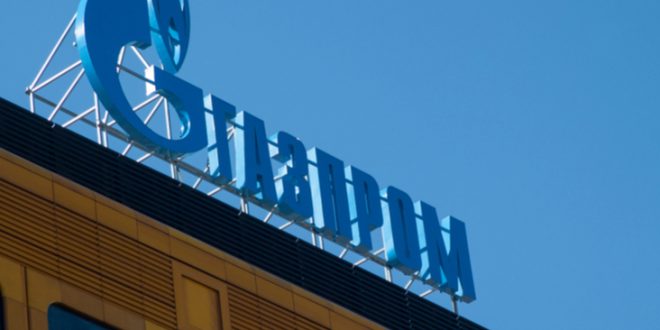Russian gas monopoly Gazprom took an important step toward cutting off almost all of its remaining supplies to the EU on Tuesday, as the Kremlin pulled its last remaining levers to pressure western and central Europe into dropping its support for Ukraine.
In a post on its official Telegram channel, Gazprom said it may seek to add the Ukrainian gas pipeline operator Naftogaz Ukrainy to Russia’s list of sanctioned entities, ratcheting up a dispute over the Ukrainian company’s alleged failure to ship Russian gas westward according to its sales contract.
This would prevent it from paying Ukraine its usual transit fees, a move that would pave the way for the suspension of physical shipments.
Gazprom claimed that it had no other option, because the jurisdictions where the two parties had agreed to submit their disputes for arbitration – Sweden and Switzerland – have turned hostile to Russia, denying it the chance of a fair hearing.
The timing of Gazprom’s intervention is eye-catching, coming on the same day that several European Union members accused Russia of sabotaging the two Nord Stream pipelines that run under the Baltic Sea to Germany, which was Europe’s biggest buyer of Russian gas until the Kremlin’s invasion of Ukraine in February.
Danish and Swedish seismologists both detected what they said were two blasts from the vicinity of the pipelines which have led to massive leaks of highly explosive gas to sea level.
“There is no doubt that these were explosions,” Björn Lund, an expert with the National Seismology Center, told Swedish state broadcaster SVT.
The Nord Stream pipelines were already essentially idle, but the blasts rule out any prospect of a resumption of Russian gas flows in the foreseeable future.
Ukraine’s pipeline network is the only viable alternative route for sending large volumes of Russian gas to Europe, so Gazprom’s threat against Naftogaz creates an effective pretext for it refusing to use it.
“Today, Russia brought its energy weaponisation against Europe to the next level: from economic to hybrid war,” said Simone Tagliapetra, an analyst with the Bruegel think-tank in Brussels, via Twitter TWTR, adding that Europen needs “to adjust our response and preparedness accordingly.”
The risk of more extreme Russian action against Europe’s gas supplies appears already to have spread to Norway’s offshore oil and gas industry, now the biggest single source of gas for Europe as the winter heating season starts.
Norway’s Petroleum Safety also warned on Monday of an increase in unidentified drone flights close to offshore installations and urged “increased vigilance by all operators and vessel owners,” stressing the need to report any further sightings.
Russian policy – both at home and abroad – has become visibly erratic since Ukrainian forces recaptured wo weeks ago large areas of territory occupied by Mosow’s forces since the summer. President Vladimir Putin has initiated the annexation of territories still held by his forces and threatened to use nuclear weapons against the West if it tries to stop the process. He’s also ordered the mobilization of hundreds of thousands of reservists – a policy that has led to nationwide protests and a panicked mass exodus of fighting-age men trying to avoid the draft.

 Iran Energy News Oil, Gas, Petrochemical and Energy Field Specialized Channel
Iran Energy News Oil, Gas, Petrochemical and Energy Field Specialized Channel



